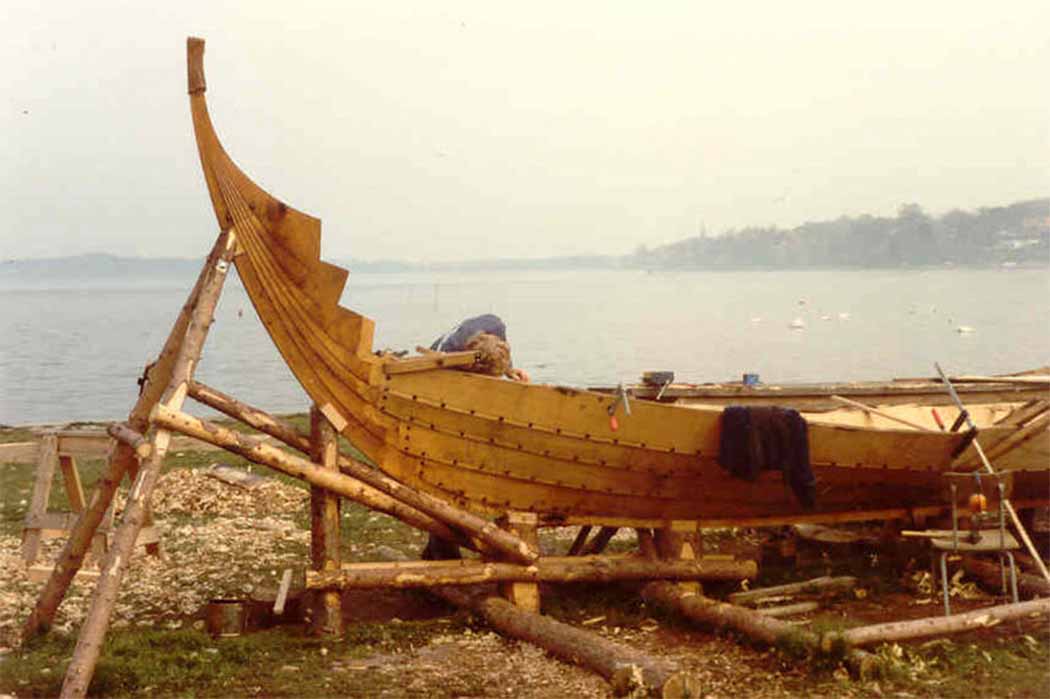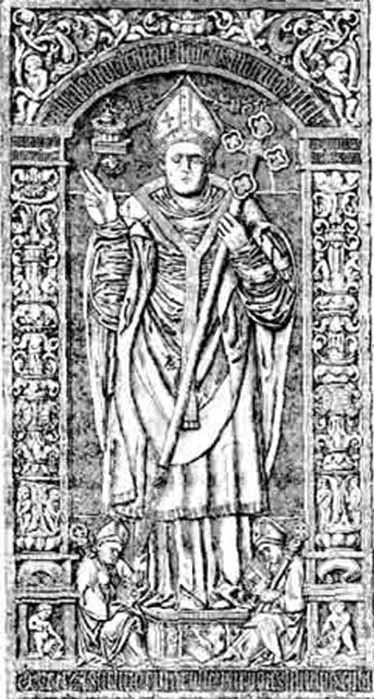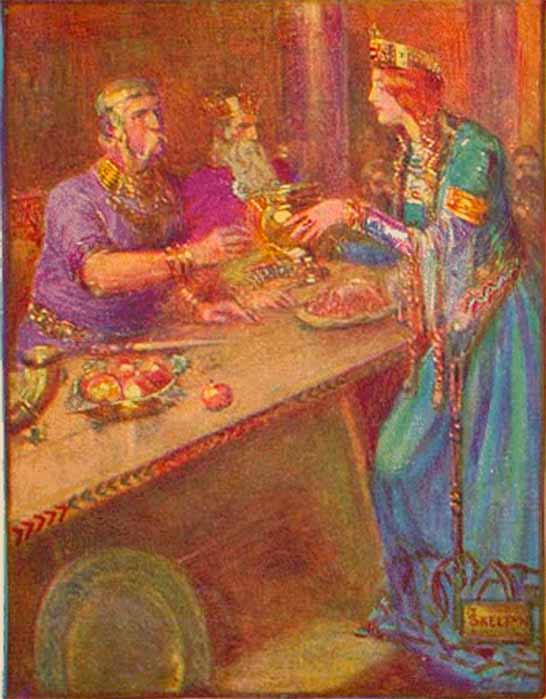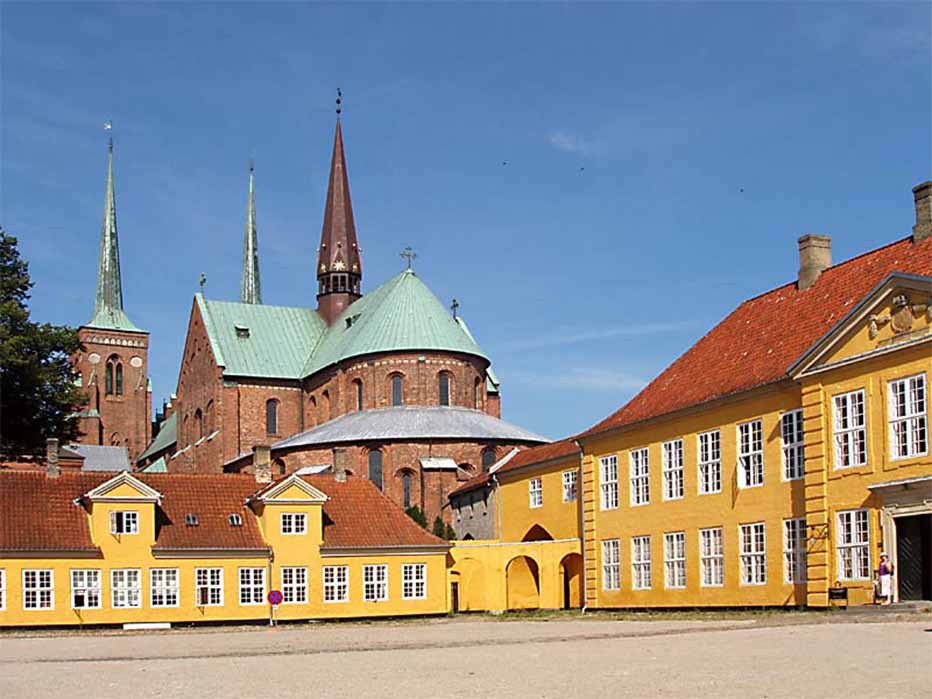
The Skuldelev Ships At Viking Roskilde, Legendary City Of King Hrothgar Of Denmark
The Danish island of Zealand is home to the city of Roskilde, the capital of Denmark from the 11th century until 1443. Roskilde was at the heart of numerous Viking land and trading routes, exerting its influence over many miles and thousands of people. As such it has long attracted historians and archaeologists alike to this Viking world, lying 19 miles (30 kilometers) to the west of the modern-day capital Copenhagen and located at the south end of the Roskilde fjord, a south branch of Isefjord. In the 1960’s a remarkable discovery was made at the end of the fjord. On the seabed lay the wrecks of Viking boats, scuttled in the 11th century to protect Roskilde from seaboard assault.
Queen Wealhþeow serving King Hrothgar and his men in Beowulf, by J.R Skelton (Public Domain)
The Founding of Roskilde
The city of Roskilde was, according to Adam of Bremen, a German chronicler, and Saxo Grammaticus, a Danish historian and theologian, founded in the 980’s in the time of Harold ‘Bluetooth’ I of Denmark (958-986 AD), of whom it is said, built both a church on the high ground above the harbor, which he dedicated to the Holy Trinity, and a royal estate there. There are however chronicles which speak to an earlier tradition where in the sixth century two kings named Ro and Heighe, the sons of Haldan, had split their father’s kingdom upon his death. Ro took the land and founded Roskilde, naming the city after himself, and Heighe took to the water. The epic poem Beowulf and an older text Widsith both mention a Danish king called Hrothgar whom the sagas, Icelandic and Scandinavian chronicles all suggest may have been the same king as Ro. The Gesta Danorum and the Chronicon Lethrense in particular state that Horthgar and Ro are versions of the same name. So perhaps Roskilde was founded by the Viking Hrothgar, described in Beowulf as living in Hereot a “towered hall, high, gabled wide, the hot surge waiting the furious flame.” Hrothgar is generally considered to be semi-legendary but today many agree that Hereot in Beowulf probably is a fair reflection of real Viking mead hall. No evidence of either Ro’s buildings or Harold Bluetooth’s have been found to date, but Viking remains have been found dating to circa 1030 proving that they were in the area at that time.
Adam of Bremen calls these early “wicings…raiders and pirates” who were predominantly seafarers. It is therefore easy to see why they were attracted to the site of Roskilde with its fjord, easy access to the sea and protected harbor. The banks of the fjord were also, then as today, dominated by beech forests, providing timber perfect for building the Vikings great sea-going vessels. In addition, the waters were teeming with fish and shellfish.

Grave effigy of Absalon, Bishop of Roskilde, Archbishop of Lund (Public Domain)
By 1020 King Canute made Roskilde a bishopric, confirming that it was a high-status Viking settlement. On the site of an early church in 1170, Absalon, who was one of the most powerful men of his age and Bishop of Roskilde from 1158-92, ordered that another, larger building be built. This went on to become Roskilde Cathedral which was completed in 1275. In keeping with its status as capital of Denmark Roskilde minted its own coins from the 11th-14th centuries, and was defended by a large moat, constructed in 1150 by Sweyn Grathe, who was king of Denmark from circa 1125-1157. He was famous or rather infamous for trying to murder both Canute V and his cousin Valedmar I, his co-rulers and rivals for power, at a peace banquet, an incident that is known today as the Blood-feast of Roskilde.
Rosklide Cathedral (Nico/ CC BY-SA 3.0)
The Decline of Roskilde
By 1268 Roskilde was the major market town in Denmark, making it also the most important. It thrived as a place where religion and trade mingled. As a key Catholic bishopric, it continued to thrive until 1443 when events connected with the Reformation saw the Church's influence decline, although the cathedral remained the place where the rulers of Denmark were buried. Following the Reformation, the city went into sharp decline and suffered numerous disasters including serious damage during the Dano-Swedish war of 1657-8 which ended in a Danish/Norway defeat and harsh terms being imposed under the 1658 Treaty of Roskilde.
- Torment of the Sea Nomads. Viking Sea States of Merchants
- Thor Heyerdahl, Reviving The Solar Cult Of Ancient Mariners
- Traces Of Viking Ivar the Boneless’ Dynasty At Waterford, Ireland
Unfortunately, the city also found itself at the heart of the last great episode of plague to ravage the Baltic and in 1710 and 1711 thousands died. The city was further seriously damaged by a series of fires in the 1730’s. The construction of a rail link between Roskilde and Copenhagen in the 19th century saw the city once again beginning to flourish, but it remained largely a backwater, a forgotten episode in Danish history, until in the 20th century when a remarkable discovery was made.






